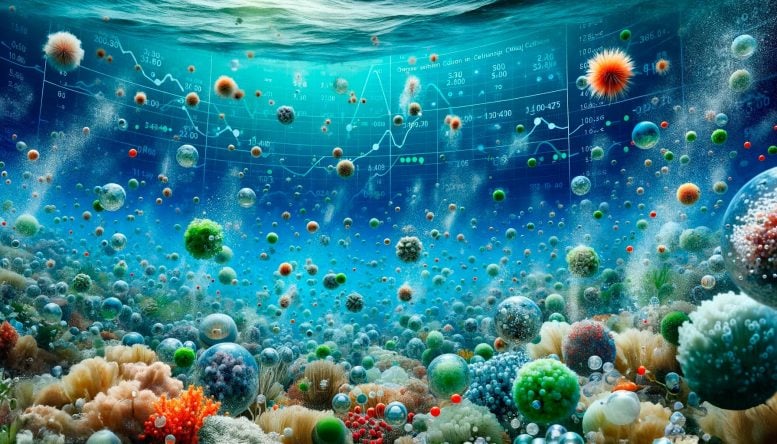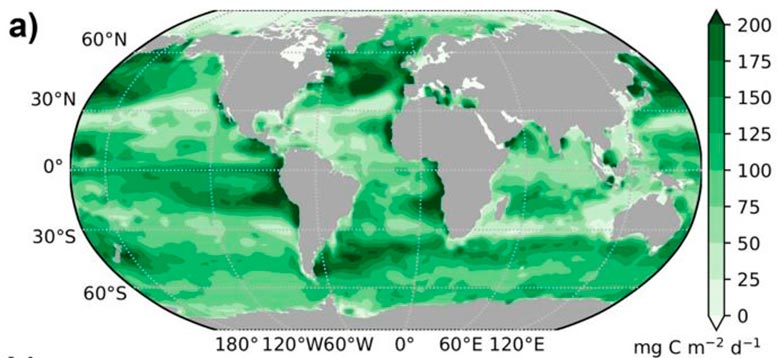
A new study to be published in Nature suggests that the ocean’s capacity to absorb atmospheric carbon dioxide is 20% higher than previously thought, at 15 gigatonnes per year. This research focused on the role of plankton in carbon transportation to the seabed. Credit: SciTechDaily.com
Research reveals that oceans store 20% more carbon dioxide than previously estimated, primarily through plankton transporting carbon to the seabed. This new understanding, however, doesn’t significantly impact the current CO2 emission crisis.
The ocean’s capacity to store atmospheric carbon dioxide is some 20% greater than the estimates contained in the latest IPCC report.[1] These are the findings of a study that was published in the journal Nature on December 6, 2023, led by an international team including a biologist from the CNRS.[2] The scientists looked at the role played by plankton in the natural transport of carbon from surface waters down to the seabed.
Plankton gobble up carbon dioxide and, as they grow, convert it into organic tissue via photosynthesis. When they die, part of the plankton is transformed into particles known as ‘marine snow’. Being denser than seawater, these particles sink down to the seabed thus storing carbon there and providing essential nutrients for a wide range of deep-sea organisms, from tiny bacteria to deep-sea fish.

Global distribution of the organic carbon flux from the open-ocean surface layer. Credit: © Wang et al., 2023, Nature.
By analyzing a bank of data collected from around the world by oceanographic vessels since the 1970s, the team of seven scientists were able to digitally map fluxes of organic matter throughout the world’s oceans. The resulting new estimate of carbon storage capacity is 15 gigatonnes per year, an increase of around 20% compared with previous studies (11 gigatonnes per year) published by the IPCC in its 2021 report.
This reassessment of the ocean’s storage capacity represents a significant advance in our understanding of carbon exchanges between the atmosphere and the ocean at the global level. While the team stresses that this absorption process takes place over tens of thousands of years, and is therefore not sufficient to offset the exponential increase in CO2 emissions caused by worldwide industrial activity since 1750, the study nonetheless highlights the importance of the ocean ecosystem as a major player in the long-term regulation of the global climate.
Notes
- IPCC Climate Change 2021 Report, The Physical Science Basis, Chapter 5, Figure 5.12: Figure AR6 WG1 | Climate Change 2021: The Physical Science Basis (ipcc.ch)
- From the Laboratoire des Sciences de l’Environnement Marin LEMAR (CNRS/UBO/IFREMER/IRD)
Reference: “Biological carbon pump estimate based on multi-decadal hydrographic data” by Wei-Lei Wang, Weiwei Fu, Frédéric A. C. Le Moigne, Robert T. Letscher, Yi Liu, Jin-Ming Tang and François W. Primeau, 6 December 2023, Nature.
DOI: 10.1038/s41586-023-06772-4









As usual, there is no error or uncertainty envelope provided to go along with the nominal values. The new study comes up a different estimate. How about some quantitative evidence to convince the reader that it is not just different, but better?
I see that the actual published article does use uncertainty (1 sigma) envelopes throughout. It is the summary published here that has stripped out that information.